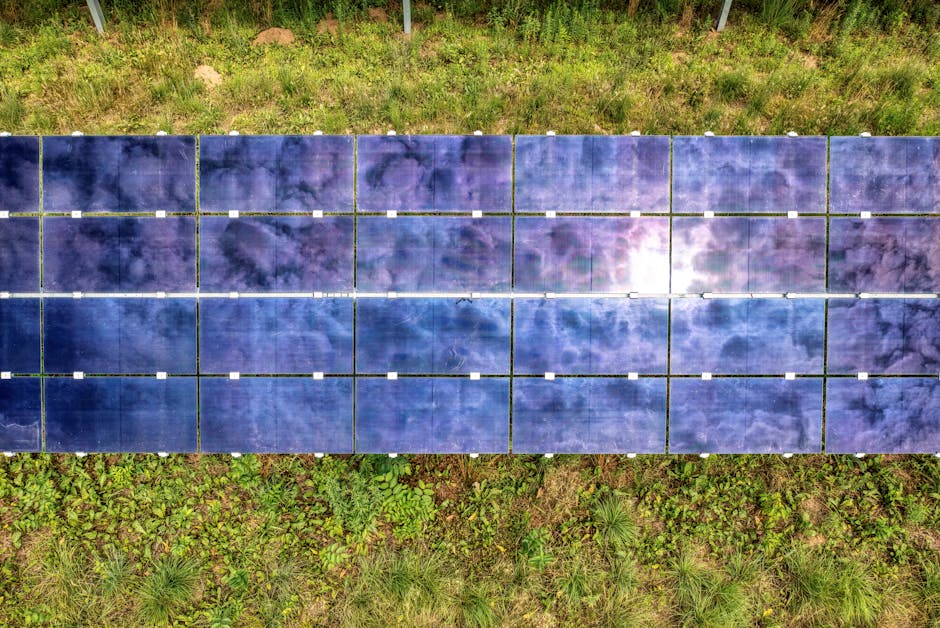Top 5 Solar Technologies Revolutionizing Energy
Did you know that solar energy could power the entire planet many times over? With the sun shining every day, it’s no wonder that solar technologies are taking the world by storm. Lets explore the top five solar technologies changing the way we think about energy.
What Are the Key Solar Technologies?

Solar energy is more than just panels on rooftops. it’s a blend of different technologies that help harness the suns power. Here are the top five that are making waves:
- Solar Photovoltaics (PV)
- Concentrated Solar Power (CSP)
- Solar Thermal Energy
- Bifacial Solar Panels
- Floating Solar Farms
Now, lets dive deeper into each of these technologies and see how they work.
1. What Are Solar Photovoltaics (PV)?

Solar photovoltaics (PV) are the most common type of solar technology. They convert sunlight directly into electricity. Think of them as tiny power plants on your roof.
How does it work? When light hits the solar cells in a PV panel, it knocks electrons loose. This movement of electrons creates electricity. it’s like pushing a bunch of kids on swingsone push gets them going!
According to the Solar Energy Industries Association, in 2022, the U.S. installed enough new solar capacity to power over 3 million homes. that’s a significant step toward a cleaner future!
2. What Is Concentrated Solar Power (CSP)?

Concentrated Solar Power (CSP) is a bit different. Instead of using PV panels, CSP systems use mirrors to focus sunlight onto a small area. This concentrated energy heats up a fluid, which then turns into steam to power a turbine and generate electricity.
This technology is ideal for large-scale solar farms. A CSP plant can store heat for hours, allowing it to produce power even when the sun isn’t shining. Imagine having a big thermos that keeps your coffee hot all day!
3. How Does Solar Thermal Energy Work?

Solar thermal energy captures the suns heat instead of converting it to electricity. This method is great for heating water or air for residential and commercial use.
For example, solar water heaters can warm up your homes water supply. They work by using solar collectors that absorb sunlight and heat up a fluid. This fluid then transfers heat to the water in your tank. it’s like having a cozy blanket on a chilly day!
4. What Are Bifacial Solar Panels?
Bifacial solar panels are a newer technology that can capture sunlight from both sides. Traditional panels only collect light from the front. But bifacial panels can gather reflected sunlight from the ground, increasing their energy output.
they’re particularly effective in snowy or sandy areas where sunlight reflects off the surface. This means they can produce more energy without needing more space. it’s like having a two-for-one deal on your energy production!
5. What Are Floating Solar Farms?
Floating solar farms are an exciting trend. They place solar panels on bodies of water, like lakes or reservoirs. This setup keeps the panels cool and can reduce water evaporation.
These farms are great for areas with limited land. They can provide power while also helping the environment. it’s like multitasking for Mother Nature!
How Are These Technologies Making a Difference?
Solar technologies are not just about harnessing energy. They also positively impact the environment and the economy.
- Environmentally Friendly: Solar power reduces dependence on fossil fuels, helping to lower greenhouse gas emissions.
- Job Creation: The solar industry has created hundreds of thousands of jobs, from manufacturing to installation.
- Energy Independence: By using solar energy, countries can reduce their reliance on imported energy sources.
What About Cost and Efficiency?
Cost is a common concern when it comes to solar technology. However, prices have dropped significantly over the last decade. In fact, the cost of solar PV has fallen by about 82% since 2010!
Efficiency is also improving. Modern solar panels convert over 20% of sunlight into electricity. Researchers are working on new materials that could push this number even higher.
What Are the Challenges of Solar Technologies?
While solar technologies offer fantastic benefits, they also face challenges:
- Intermittency: Solar energy production depends on sunlight. This means it can be less reliable at night or on cloudy days.
- Space Requirements: Large installations, like CSP and solar farms, need significant land, which can be a challenge in urban areas.
- Initial Costs: Although prices have dropped, installation can still be expensive for some homeowners.
But don’t let these challenges discourage you. Many solutions, like energy storage, are developing to address these issues.
How Can You Get Involved?
If you’re interested in solar energy, there are many ways to get involved:
- Go Solar: Consider installing solar panels on your home.
- Advocate for Solar: Support policies that promote renewable energy.
- Educate Others: Share what youve learned about solar technologies.
Every small action can lead to big changes!
Conclusion: Harnessing the Power of the Sun
Solar technologies are revolutionizing the way we generate energy. From solar photovoltaics to floating solar farms, the potential is immense. As we continue to embrace these innovations, we can look forward to a cleaner, greener future.
So, what are you waiting for? Dive into the world of solar energy and see how you can make a difference today!
For more information on solar technologies, check out the Solar Energy Industries Association.



